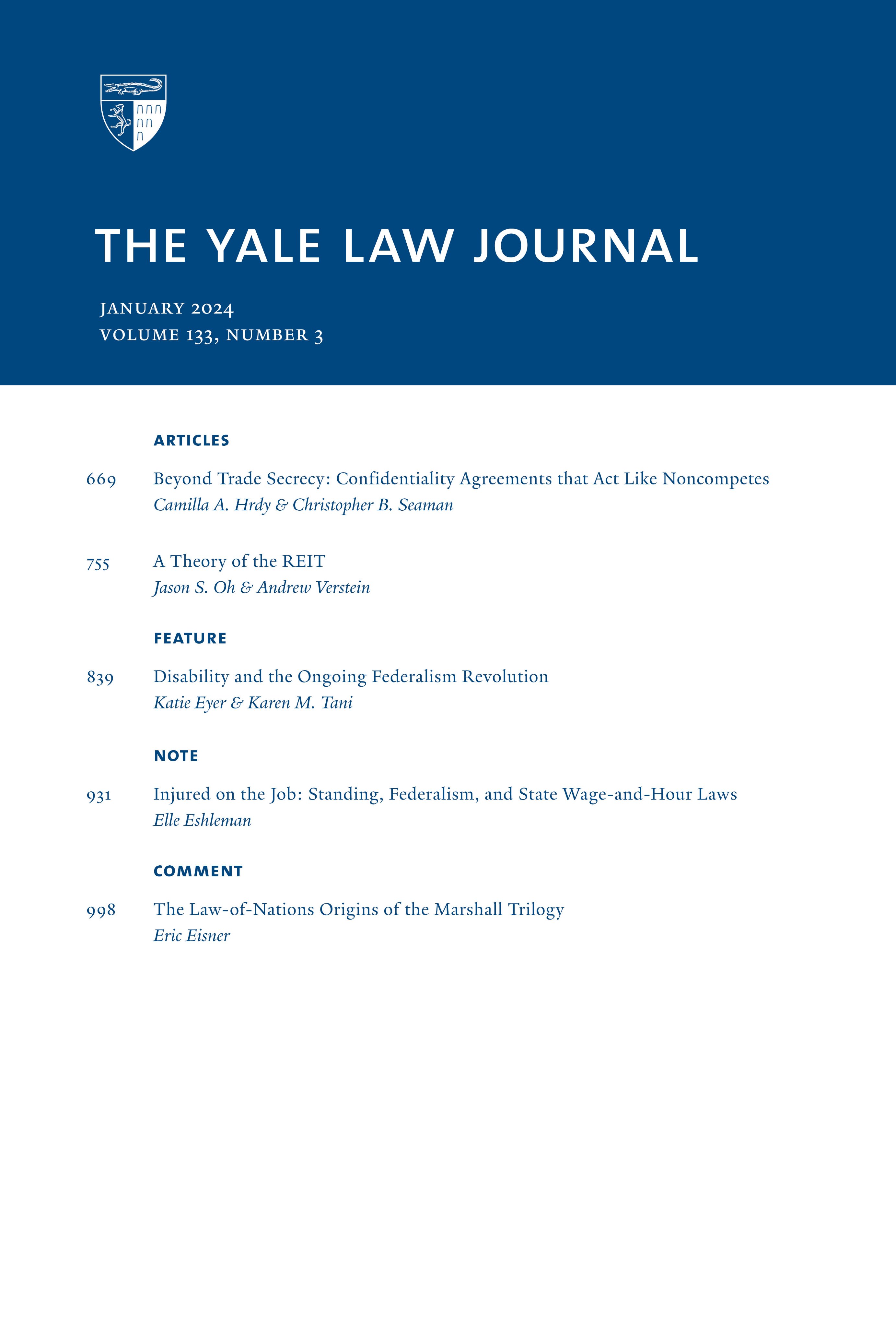Rules Against Rulification
IF 5.2
1区 社会学
Q1 LAW
引用次数: 1
Abstract
The Supreme Court often confronts the choice between bright-line rules and open-ended standards—a point well understood by commentators and the Court itself. Less well understood is a related choice that arises once the Court has opted for a standard over a rule: may lower courts develop subsidiary rules to facilitate their own application of the Supreme Court’s standard, or must they always apply that standard in its pure, un-“rulified” form? In several cases, spanning a range of legal contexts, the Court has endorsed the latter option, fortifying its first-order standards with second-order “rules against rulification.”Rules against rulification are a curious breed: they promote the use of standards, but only in a categorical, rule-like manner. The existing literature on the rules-standards dilemma sheds only limited light on the special problems that anti-rulification rules present. This Article addresses these problems head-on, disentangling the sometimes-unintuitive consequences that follow from the Court’s adoption of anti-rulification rules, while also offering practical insights as to when and how these rules should be deployed. Among other things, the Article points out that anti-rulification rules, while useful in some circumstances, can carry the surprisingly maximalist consequences of freezing the development of the law and constraining the methodological choices of lower court actors. In addition, the Article sets forth some prescriptive suggestions regarding the creation and detection of anti-rulification rules, proposing, for instance, that the Court should proceed cautiously before pronouncing rules against rulification and that lower courts should insist on express prohibitions from the Court before deeming themselves barred from the rulification endeavor.禁止重复规则
最高法院经常面临在明确的规则和开放式的标准之间做出选择——评论员和最高法院本身都很清楚这一点。不太容易理解的是,一旦法院选择了一种标准而不是一种规则,就会出现一个相关的选择:下级法院是否可以制定辅助规则来促进他们自己对最高法院标准的应用,或者他们必须总是以纯粹的、未经“裁定”的形式应用该标准?在若干案件中,在一系列法律背景下,最高法院支持后一种选择,用二级“反对无效规则”来强化其一级标准。反对繁文缛节的规则是一种奇特的品种:它们促进了标准的使用,但只是以一种明确的、类似规则的方式。现有的关于规则-标准困境的文献只能有限地揭示反滥用规则所带来的特殊问题。本文正面解决了这些问题,理清了法院采用反扩散规则所带来的有时不直观的后果,同时也就何时以及如何部署这些规则提供了实际的见解。除其他事项外,该条指出,反滥用规则虽然在某些情况下有用,但可能带来令人惊讶的最大化后果,即冻结法律的发展并限制下级法院行为者的方法选择。此外,该条还就反重复规则的创建和发现提出了一些说明性建议,例如,建议法院在宣布反对重复规则之前应谨慎行事,下级法院在认为自己被禁止重复努力之前应坚持法院的明确禁令。
本文章由计算机程序翻译,如有差异,请以英文原文为准。
求助全文
约1分钟内获得全文
求助全文
来源期刊

Yale Law Journal
LAW-
CiteScore
4.50
自引率
6.20%
发文量
0
期刊介绍:
The Yale Law Journal Online is the online companion to The Yale Law Journal. It replaces The Pocket Part, which was the first such companion to be published by a leading law review. YLJ Online will continue The Pocket Part"s mission of augmenting the scholarship printed in The Yale Law Journal by providing original Essays, legal commentaries, responses to articles printed in the Journal, podcast and iTunes University recordings of various pieces, and other works by both established and emerging academics and practitioners.
 求助内容:
求助内容: 应助结果提醒方式:
应助结果提醒方式:


